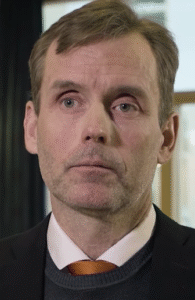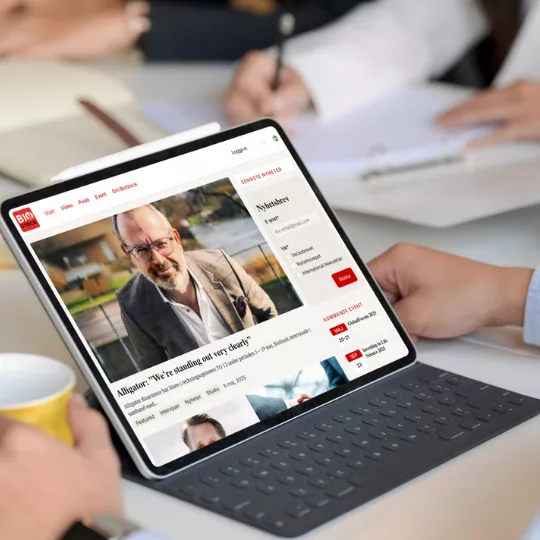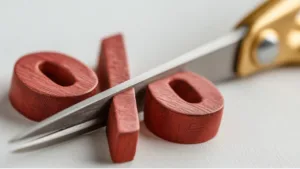American Association for Cancer Research (AACR) in Washington, DC in April – the world's largest cancer conference that brings together tens of thousands of participants each year; researchers from all research disciplines, large patient organizations and leading representatives from the pharmaceutical industry.
Unlike today's established methods, PHI's HoloMonitor can measure the properties of individual cells both before, during and after the cells are treated with drugs. The fact that new discoveries in the fight against cancer, made possible by the Lunda company's advanced technology, are presented in this optimal arena in this context will clearly demonstrate the value of HoloMonitor to a large and informed audience, where a high proportion of those present belong to PHI's absolute core target group. It is an excellent marketing opportunity for the company, whose ambition is to eventually spread the groundbreaking technology, which according to PHI themselves lacks comparable competition, worldwide.
Currently, over 80 HoloMonitor instruments are in operation at around 70 cell laboratories, which has led to over 60 published scientific papers to date. In April, three more studies will be presented at the world's largest cancer research conference.
Phase Holographic Imaging's flagship product HoloMonitor is a powerful instrument, a so-called cytometer, that enables long-term studies of cells by photographing the cells in an optimal growth environment every few minutes. Unique to the product is that with HoloMonitor, unlike conventional methods, you can not only film but also measure the properties of individual cells with great accuracy both before, during and after the cells are treated with drugs.
By continuously measuring a larger number of individual cells over time, researchers can use HoloMonitor to analyze and understand various cell processes such as cell growth, cell division, and cell movement in individual cells.
The company currently has a potential customer base of approximately 120 cell laboratories. According to PHI's own data, the company's technology can help revolutionize current treatments, which could eventually mean that diseases that are currently considered incurable have the potential to become treatable.
A concrete example of this would be that PHI's technology could be used to analyze the impact of different chemotherapy drugs on specific cancer tumor cells, which in turn could enable more precise, effective and personalized cancer treatment.

Peter Egelberg, CEO of Phase Holographic Imaging, can you tell us something about the background to why the three research groups from Lund University and Northeastern University have chosen to work with your technology?
– When I asked them the question myself, they replied that our HoloMonior technology makes it possible for them to measure things that they have not previously been able to measure, which is of course a strong argument for choosing our product.
Their study results will now be presented at the AACR Annual Meeting, where tens of thousands of the world's most prominent talents in cancer science and medicine from institutions all over the world come together. Is this the optimal "showcase" for your products?
– Yes absolutely, AACR is a key event when it comes to scientific conferences for cancer research.
The purpose of the conference is, among other things, to stimulate research collaborations and for researchers from all over the world to have the opportunity to learn about new exciting concepts, tools and techniques to implement in their own research. What role do you think PHI can and should play in this global context?
– Our role is to both improve and streamline preclinical research by digitizing it with technology that is currently established in areas outside of medical research. With our unique HoloMonitor technology, which currently lacks comparable competition, we can contribute in a valuable way to research in several important fields.
Your competitive situation is interesting. The only real competitor on the market is Essen BioScience, but their instruments are based on more traditional microscope technology. Unlike Essen's instruments, your HoloMonitor technology can measure cell volume and movement, among other things. How important is that difference for your existing and potential future customers?
– Cell movement is very important, but it is difficult to measure with traditional technology. Aggressive cancer cells move more and are more likely to metastasize, which is one of the reasons why cell movement is important.
– At AACR, one of the research groups will present results where, by measuring cell volume, they can measure how long the cell division process itself takes and how this is affected when cancer cells are treated with a natural protein. A delay in cell division is interesting because it leads to reduced tumor growth.
– Chemotherapy is toxic to all cells, which is the reason for the dramatic side effects. It would be a major advance to be able to replace chemotherapy by increasing the concentration of naturally occurring proteins instead.
Can you also elaborate a little on how your technology can be used in different parts of preclinical research, partly in the field of cancer but also in other contexts?
– The cancer area is the largest. However, our technology is used in all preclinical contexts where cultured cells are used, for example in the stem cell area where the main aim is to treat common diseases other than cancer by replacing diseased cells with healthy ones.
What would you say is the biggest advantage that researchers can gain from working with your technology – time savings, better accuracy, or something else?
– I would say both – because our technology enables researchers to measure both new things and many things at the same time. Normally, researchers need to perform an experiment for each thing they want to measure. With HoloMonitor, they take a film of the cells at one time. Based on this film, they can then measure several things by using different modules in our software.
Your goal is to establish your method for non-destructive cell analysis and thereby take a significant market share of the market that is now emerging as preclinical research becomes increasingly digitalized. What is your strategy for success?
– The established measurement methods are both blunt and laborious, but at the same time they are simple and straightforward to use. Although HoloMonitor can measure both new and many things at the same time, it is absolutely crucial that it is at least as easy and straightforward for researchers to measure each thing with HoloMonitor as with the established methods. To succeed, “digitalization” needs to enrich and facilitate preclinical research without complicating it.
Finally, what are your personal hopes for your participation at AACR in April?
– The overall aim is of course that our participation leads to increased sales and industry attention, similar to our other marketing activities. I believe that there are good conditions to achieve this aim., concludes Peter Egelberg, CEO of Phase Holographic Imaging.
Read about the AACR conference here.
Read about the presentations to be held in connection with PHI's booth here.
The content of Biostock's news and analysis is independent, but Biostock's operations are to some extent financed by companies in the industry. This post refers to a company from which BioStock has received funding.
 Get all the news and analysis directly on your mobile with BioStock's mobile app!
Get all the news and analysis directly on your mobile with BioStock's mobile app!






